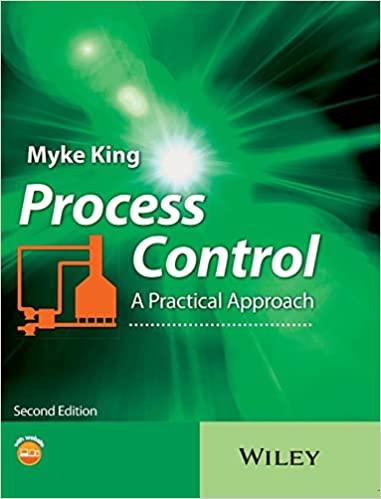Question
Oxygen diffuses through the wall of drug containers and oxidizes many drugs rendering them inactive. It is the oxygen diffusion/reaction scenario that limits the shelf-life
Oxygen diffuses through the wall of drug containers and oxidizes many drugs rendering them inactive. It is the oxygen diffusion/reaction scenario that limits the shelf-life of many pharmaceutical products. To limit the oxidation of drugs, oxygen scavengers, like sodium bisulfite (NaHSO3) are often added. The reaction to remove oxygen is: Consider a liquid drug stored in a cylindrical polyethylene container. The container is 15 cm high and has an inner diameter of 6 cm. The initial concentration of NaHSO3 in the drug formulation is 1 g/liter. How thick must the walls of the container be to ensure that 90% of the NaHSO3 remains after 1 year? Neglect diffusion through the top and bottom of the container and assume that the NaHSO3 reacts instantly with the O2 so that the O2 concentration in the drug is always 0. The effective diffusivity of O2 through polyethylene is 9 1013 m2/s and you may assume the partition coefficient is 1, P = 1 atm, T = 20C, and the process operates at steady-state.
Step by Step Solution
There are 3 Steps involved in it
Step: 1

Get Instant Access to Expert-Tailored Solutions
See step-by-step solutions with expert insights and AI powered tools for academic success
Step: 2

Step: 3

Ace Your Homework with AI
Get the answers you need in no time with our AI-driven, step-by-step assistance
Get Started


